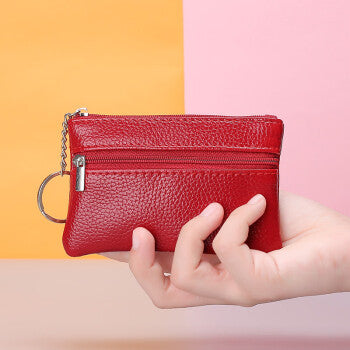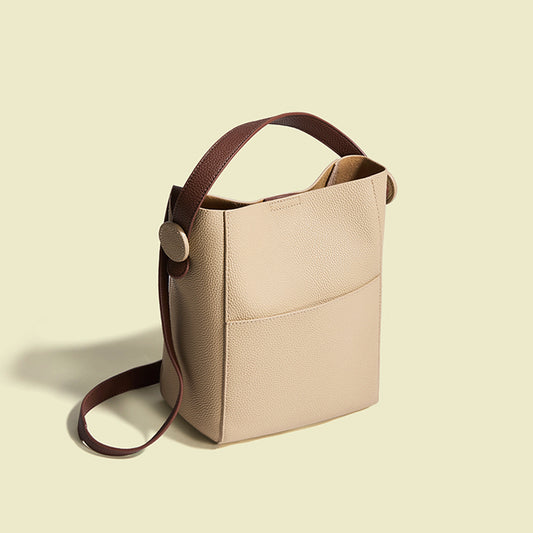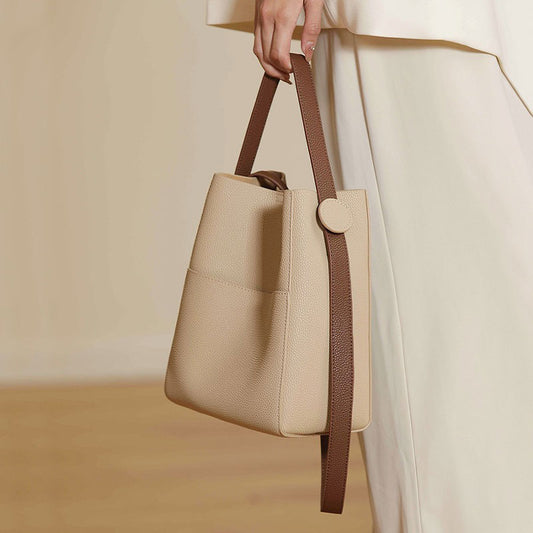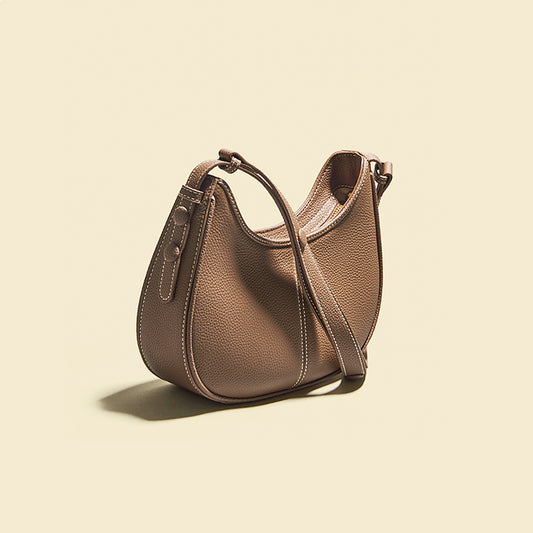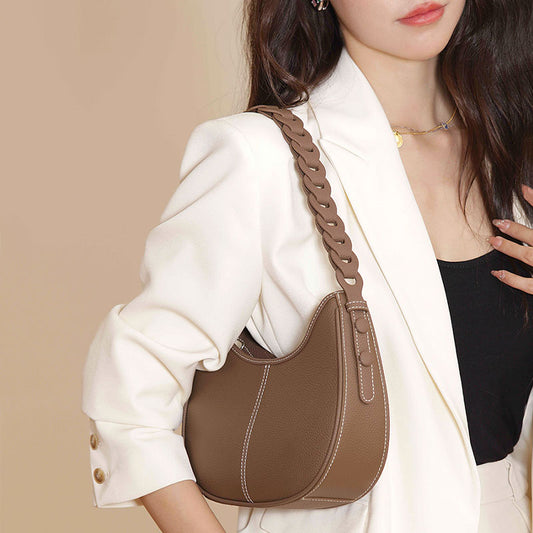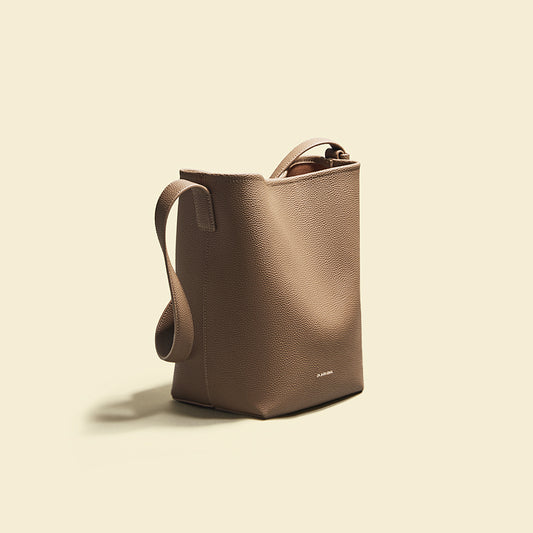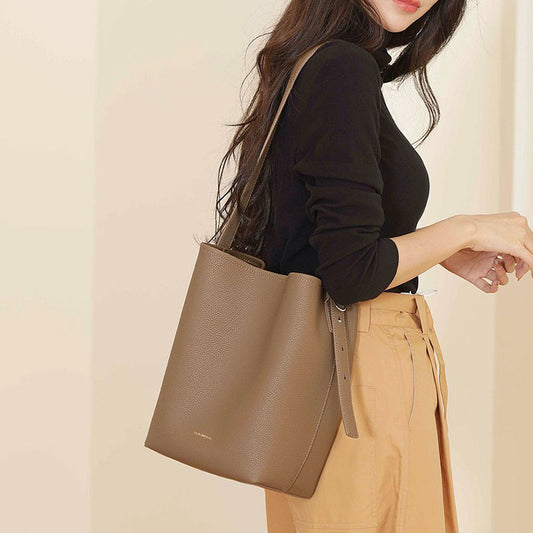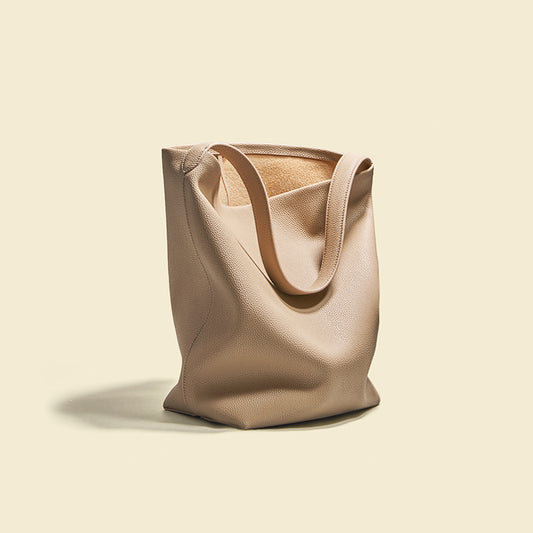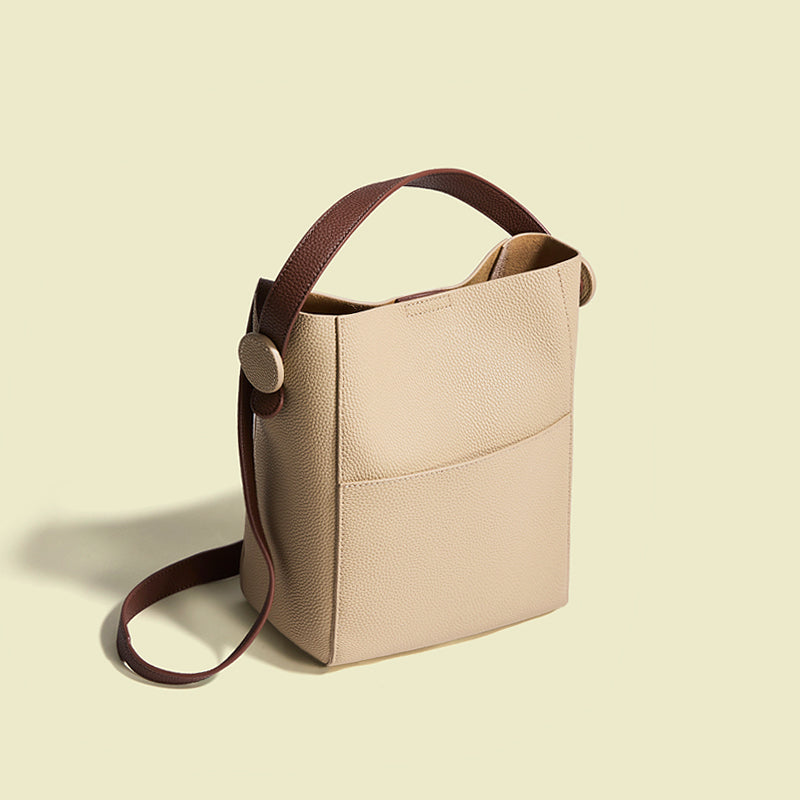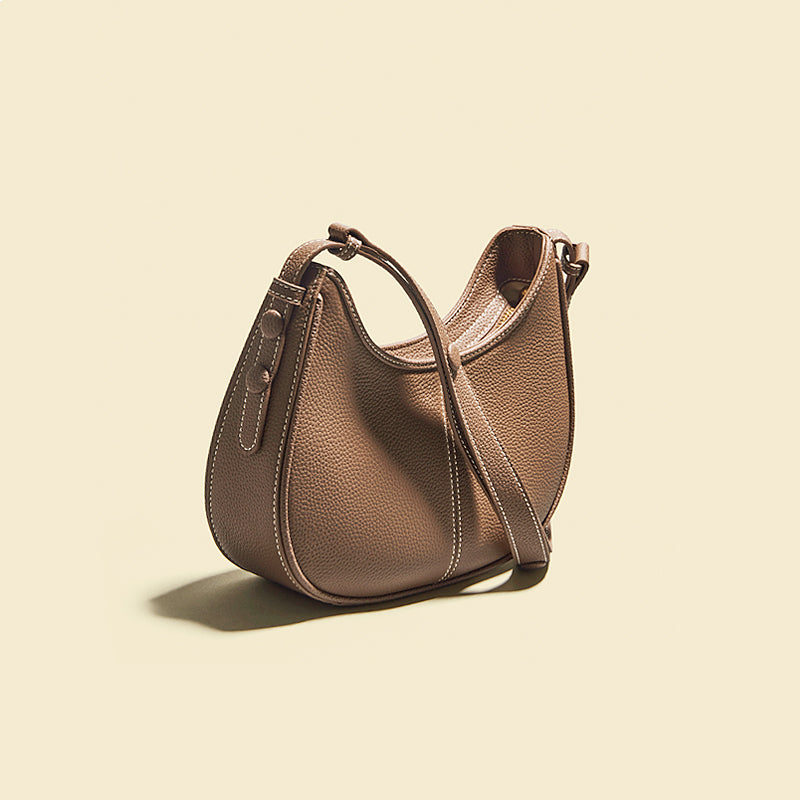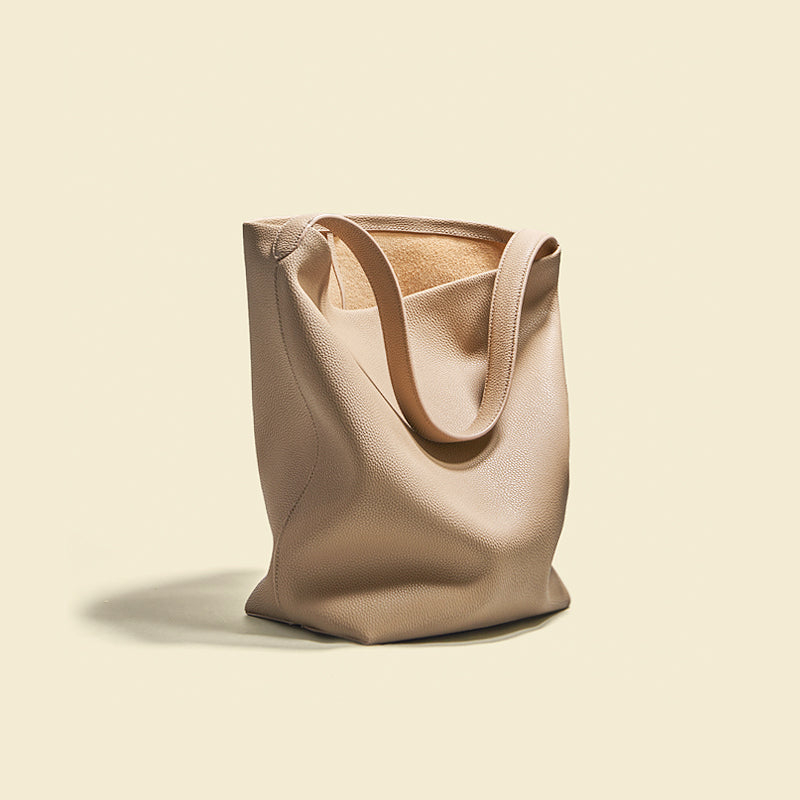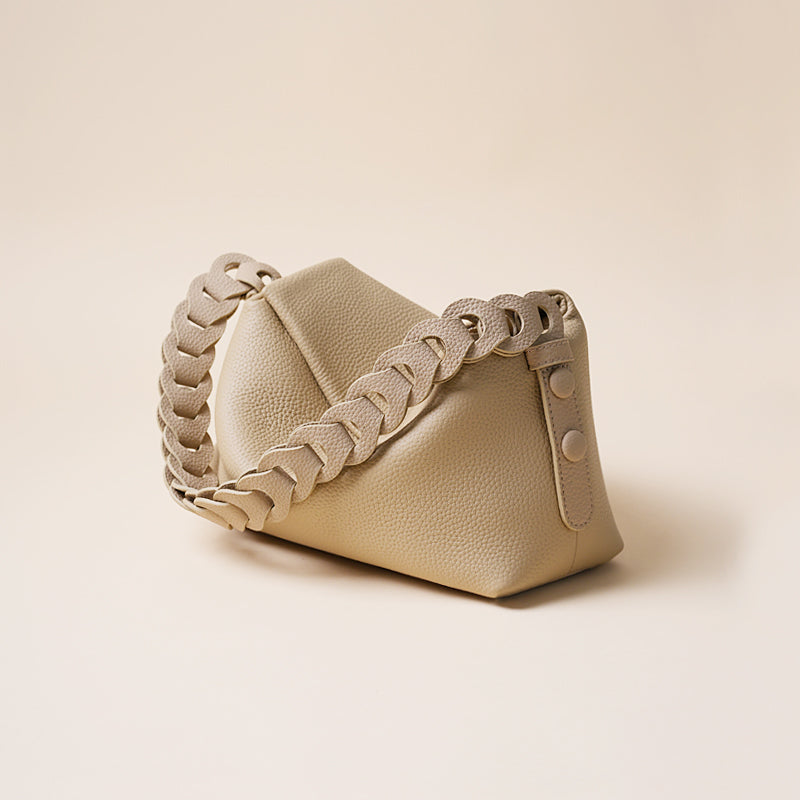Introduction
Handbags serve as more than just fashion accessories; they are essential tools for organization, style expression, and practicality in everyday life. Nevertheless, fit and utility are just as important as style when choosing the ideal handbag. Properly measuring a handbag ensures it meets your needs.
The significance of accurately measuring handbags must be balanced. From ensuring your laptop fits snugly in your work tote to complying with airline carry-on regulations, knowing the precise dimensions of your handbag can save you from frustration and inconvenience.
We'll dive into the realm of handbag dimensions in this extensive tutorial, giving you the knowledge you need to up your accessory game and make wise judgments.
Here's a sneak peek of the topics we'll explore:
- Understanding Handbag Measurements: We'll break down the dimensions of length, width, height, and depth, explaining why each measurement is crucial for selecting the perfect handbag.
- How to Measure a Handbag: Step-by-step instructions tailored to ensure accuracy, along with practical tips for achieving precise measurements.
- Exploring Different Handbag Types: From clutches to crossbody bags, we'll examine various styles and discuss how to measure each type effectively.
- Interpreting Handbag Size Charts: Navigate size charts like a pro, deciphering between inches and centimeters to find the ideal handbag size for your needs.
Understanding Handbag Measurements
Explaining Length, Width, and Height When it comes to handbag measurements, three primary dimensions reign supreme: length, width, and height. Each dimension serves a specific purpose in determining the overall size and capacity of a handbag.
Length: A handbag's length is determined by measuring the distance down its longest side from one end to the other. This dimension gives you an idea of how much space is available horizontally within the bag. It's crucial for accommodating larger items like books, tablets, or laptops.
Width: A handbag's width is measured from side to side, perpendicular to its length, as opposed to its length, which is measured along its longest side. This dimension indicates the breadth of the bag and determines how much you can fit across its width. It's essential for gauging the bag's capacity and organizing items effectively.
Height: A handbag's height is determined by measuring the space between its base and top edge when it stands upright. This dimension determines how much vertical space is available for storing items. It's particularly important for bulky or tall items like water bottles, umbrellas, or wallets.
Importance of Bag Depth
While length, width, and height provide valuable insights into a handbag's overall size, depth is often the unsung hero of handbag measurements. When a bag is fully packed, bag depth is the measurement from front to back. This dimension is critical for assessing how much volume the bag can accommodate without becoming overly bulky or misshapen.
Understanding the depth of a handbag is essential for several reasons
Capacity: A deeper bag can hold more items without sacrificing organization or accessibility. It avoids congestion and permits improved weight distribution.
Comfort: A bag with adequate depth ensures that items are stored securely without bulging or protruding uncomfortably against your body. It maximizes storage capacity without sacrificing a clean and elegant design.
Versatility: Knowing the depth of a handbag helps you assess its suitability for different occasions and purposes. Whether you're carrying a few essentials for a night out or packing for a weekend getaway, the depth of the bag plays a crucial role in meeting your needs.
Step-by-Step Guide for Measuring Length, Width, Height, and Depth of a Handbag
Measuring a handbag accurately requires attention to detail and precision. To guarantee that you obtain the most accurate measurements, adhere to the following detailed instructions:
Length:
- Spread the purse out on a solid surface.
- Measure along the longest side of the bag from one end to the other using a flexible measuring tape.
- Verify that the tape is not curled and is straight.
- Depending on your option, note the measurement in either centimeters or inches.
Width:
- Place the measuring tape perpendicular to the length measurement to get the width.
- Make sure the measuring tape is straight and not twisted as you measure from one side of the bag to the other.
- Note the measurement in either centimeters or inches.
Height:
- Place the purse back on its foundation.
- Measure the distance using the measuring tape from the bag's bottom to its top edge's highest point.
- Make sure the tape is not skewed and is straight.
- Note the measurement in either centimeters or inches.
Depth:
To replicate actual usage, fill the purse with your regular belongings. Make sure the measuring tape is straight and not bent when you measure the distance between the front and rear of the bag. Record the measurement in inches or centimeters.
Utilizing Handbag Measurement Charts
Many retailers provide handbag measurement charts to assist customers in selecting the right size. These charts typically include dimensions for length, width, height, and sometimes depth. Utilize these charts as a point of reference while contrasting various handbag designs and dimensions. Please feel free to contact the shop for assistance or explanation if a measuring chart is not provided.
Various Handbag Types and Their Measurements
Many different designs of handbags are designed to fit particular requirements and events. Understanding the measurements associated with different types of handbags is essential for selecting the perfect one to complement your lifestyle.
Tote Bags
Tote bags are popular because of how roomy and functional they are. With enough space for all your necessities, a tote bag is a great option whether you're traveling to the beach or shopping. When measuring a tote bag, consider the following:
Length and Width: Tote bags typically have generous dimensions to accommodate a variety of items. Please measure the length and width of the tote's opening to ensure it's wide enough to access your belongings easily.
Depth: A deeper tote bag provides more storage space without compromising on style. Measure the depth of the tote to gauge its capacity for bulky items like books or groceries.
School Bags:
School bags, whether backpacks or messenger bags are designed to withstand the rigors of daily use while keeping your academic essentials organized. When measuring a school bag, focus on:
Length, Width, and Height: School bags come in various sizes to accommodate different grade levels and academic requirements. Measure the bag's dimensions to ensure it can accommodate textbooks, notebooks, and other school supplies comfortably.
Compartments: Consider the interior organization of the school bag, including compartments for laptops, water bottles, and stationery.
By measuring the depth of these sections, you may be confident that your particular belongings will fit within.
Concert Bags:
Concert bags, also known as stadium-approved bags, must adhere to venue regulations regarding size and transparency. When measuring a concert bag, pay attention to:
Size Restrictions: Many concert venues impose size restrictions on bags allowed inside the premises. To make sure the bag satisfies these requirements, measure its height, breadth, and length.
Transparency: Some concert venues require bags to be transparent or have clear panels for security purposes. Measure the transparency of the bag's material to ensure it meets venue requirements.
Crossbody Bags, Clutches, etc.
Crossbody bags, clutches, and other small handbag styles are perfect for evenings out or occasions when you only need to carry the essentials. When measuring these handbags, consider:
Compact Dimensions: Crossbody bags and clutches are designed to be compact and lightweight, making them ideal for minimalistic carrying. To make sure they can hold your phone, wallet, and other necessities, measure the length, breadth, and height.
Strap Length: For crossbody bags, measure the length of the strap to ensure it's adjustable and can be worn comfortably across the body.
Interpreting Handbag Size Charts
Handbag size charts serve as invaluable tools for shoppers, providing detailed measurements and specifications to aid in the selection process. By understanding how to interpret these charts, you can make informed decisions and ensure the perfect fit for your needs.
Understanding Size Chart Metrics (Inches vs. Centimeters)
Handbag size charts often include measurements in both inches and centimeters to cater to a global audience. Understanding the differences between these metrics is essential for accurately assessing the size of a handbag:
Inches: Commonly used in the United States and other countries following the imperial system, inches provide precise measurements in increments of 1/16th of an inch. When interpreting handbag size charts in inches, pay attention to the length, width, height, and depth to gauge the overall dimensions of the bag.
Centimeters: Widely used in countries following the metric system, centimeters offer measurements in increments of 1/10th of a centimeter. Handbag size charts in centimeters provide an alternative measurement system, allowing for easy comparison and conversion between different sizing standards. When referring to a handbag size chart, consider your familiarity with inches versus centimeters and choose the measurement system that aligns with your preferences and understanding.
Average Size of Handbags
While handbags come in a variety of shapes and sizes, certain dimensions are considered standard within the industry. Understanding the average size of handbags can provide valuable insights when selecting a bag for everyday use or special occasions:
Small Handbags: Typically measuring around 6 to 10 inches in length, small handbags are perfect for evenings out or when you only need to carry essential items like your phone, keys, and wallet.
Medium Handbags: With dimensions ranging from 10 to 14 inches in length, medium handbags strike a balance between functionality and style. They are not overly large or heavy, and they provide plenty of room for everyday necessities.
Large Handbags: Measuring 14 inches or more in length, large handbags are ideal for individuals who carry a substantial amount of items on a daily basis. They provide plenty of room for laptops, tablets, water bottles, and other essentials.
Conclusion
In conclusion, Consider your lifestyle and intended use when selecting the size and style of a handbag. Properly measuring handbags is not only about ensuring a perfect fit but also about enhancing your overall shopping experience.
By taking the time to measure handbags accurately, you can avoid the frustration of ill-fitting bags and make confident purchasing decisions that align with your style and lifestyle.


